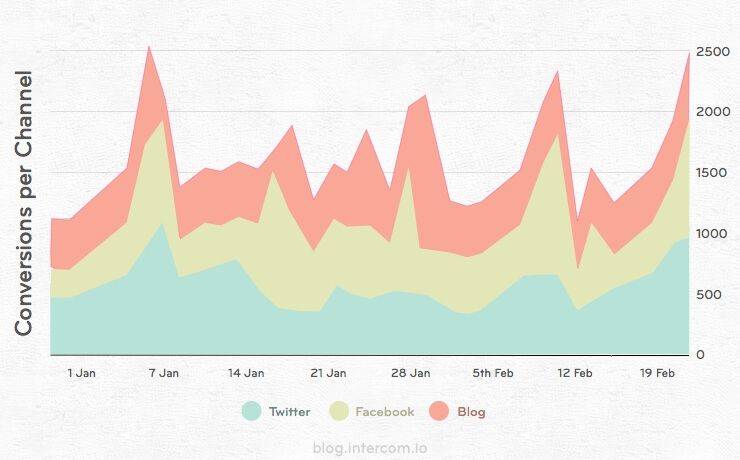Understanding distribution & conversion

The world of web analytics is full of ‘golden rules’ about dated metrics like bounce rate, time on site, pages per visit and many more. For web applications these rules are bullshit.
Not that they’re incorrect, it’s just that they offer information that isn’t actionable and just doesn’t matter. My favourite is on conversion rates.
The average conversion rate in the United States of America whether you’re selling elephants or iPods, will be 2%
– Avinash Kaushik (Digital Marketing Evangelist at Google)
Put Conversion in Context

Measuring a single conversion rate across all channels of distribution hides any real insight you can gain from the data. Distribution follows a power law. Some channels perform really well, but many perform really poorly. Putting them all in the same bucket results in a “one size fits none and means nothing” type measurement.
Let’s look at the same 2% conversion from above, but break it down by channel and throughput.

You can take this further and use stacked barcharts to highlight the price plans or revenue from each channel, or to find out which channels have the worst retention. There’s lots more insight to be had that moves beyond a simple conversion.
A small number of channels drive the majority of customer acquisitions. An important part of getting traction for your product is exploring all of the distribution channels open to you (not just those you enjoy) and identifying the ones which:
- Are profitable ways to acquire customers
- Are scalable
If you forgot to do the first part you’ll find yourself inventing formulae to make your business sound healthy. We’ve all heard variations of the fallacy “Sure we’re losing money per customer, but we’re making it up in volume”. There are some periods in some industries where acquiring customers at a loss makes sense, but these are the exception, not the rule.
If you can’t do the second part your product can still be a success, but there’s a hard limit on how far you can go and how quickly you can get there.
Exploring Distribution Channels

When I consulted I often drew variations of the above diagram for start-ups. Asking “How will you get customers?” leaves many start-ups stumped. “By blogging and tweeting” is the second most common answer, after silence. Another favourite is derisory “Well we just need to hire some marketers and sales staff, I guess” as if a sales team is a mystical force, capable of anything.
The temptation is to work on the channels you enjoy. For some that means blogging and tweeting, for others it means A/B testing landing pages. If you’re not open to trying channels where you have no experience, then you’ll never learn anything new, and you’re most likely excluding a good chunk of potential customers.
In-depth analytics
Analytics tools often collect data that’s easy to measure, not necessarily what’s useful to know, and they visualise data to look pretty, not to offer additional insight. This can leave you blinded by the very data you hoped would open your eyes.
If your goal is to acquire customers then you have explore all the distribution channels that are available to you, and analyse them independently of any meaningless site wide averages.
After all, the average person has less than two legs, but if you’re selling jeans I’d look at the data a little closer than that.






